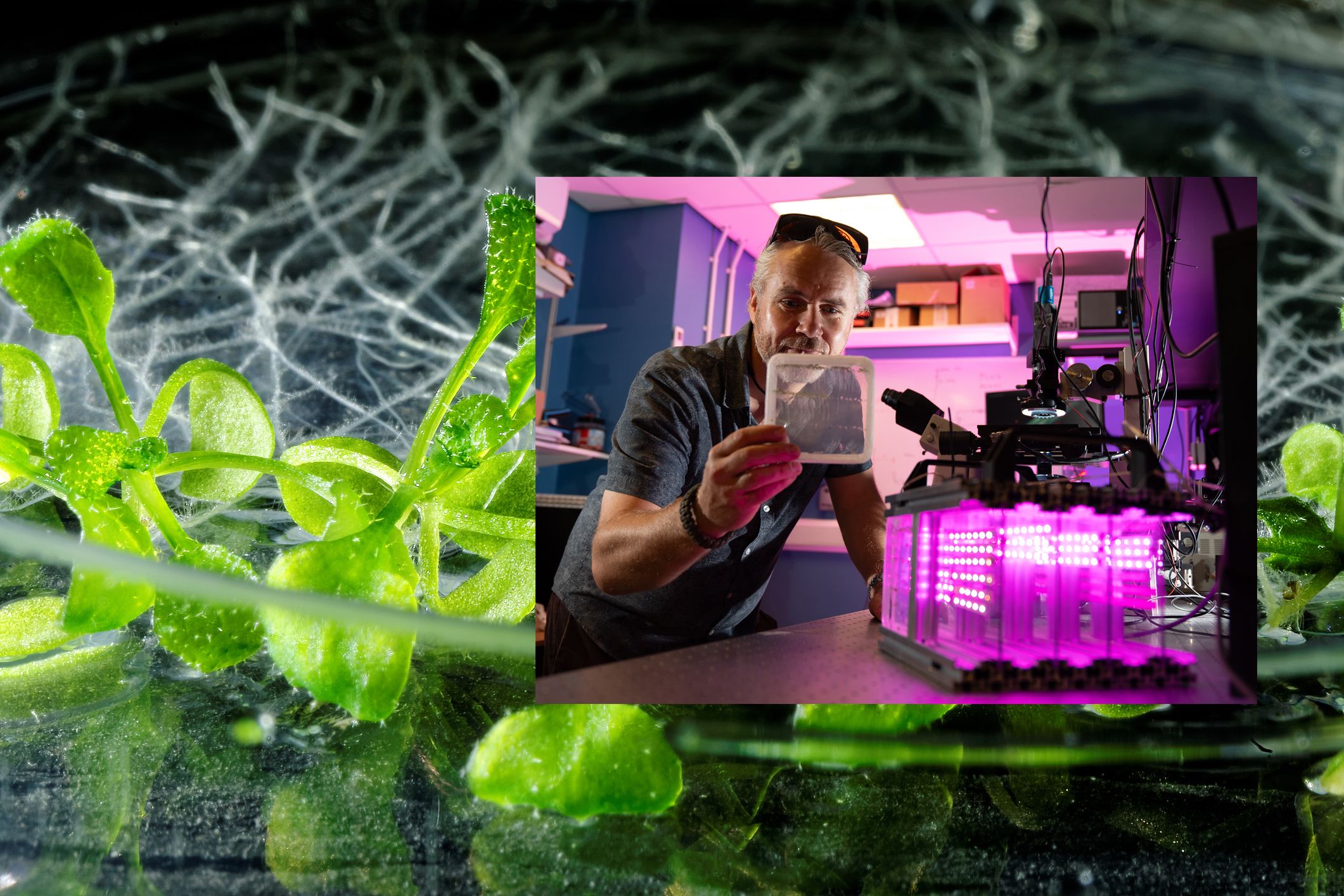From leaves to roots – imaging phosphites inside plants to improve crop production
An interdisciplinary team lead by Drs Kevin Webb and Ranjan Swarup at the University of Nottingham (UoN) has explored an imaging technique for visualising the biodistribution of phosphite biostimulants within Arabidopsis seedlings.
Phosphite biostimulants are a class of chemicals that promote crop growth. Phosphite assists root growth and structure, carbon use, and water use, among other things. This project was the first effort to use label-free imaging to map the biodistribution of phosphites within living plant tissues in real time.
Previous BBSRC-funded UoN research (BBSRC-LINK #BB/P010520/1) has previously supported the investigation of phosphite mechanisms of growth. Now, Business Interaction Voucher (BIV2) funding is facilitating industrial collaboration in this area, using state-of-the-art equipment at the Exeter CONTRAST facility.
Dr Webb’s team developed a method that probes the unique vibrations of molecules to map chemistry in space and time, revealing phosphite biodistribution directly in 3D. The BIV2 funding, with stakeholders Biolchim, Intracrop, Tradecorp International, and Verdesian, yielded the first data visualising phosphite biostimulants within plant tissues - providing a new possible route to understanding how they enhance plant root growth.
This new knowledge will provide commercial advantage to these companies in a UK/EU biostimulant market worth ~€1 billion.
Dr Kevin Webb said:
“These are exciting times to be an engineer at the interface between plant biology and chemical imaging. The Business Interaction Voucher played a crucial role in advancing our research at the intersection of plant biology and chemical imaging. It gave us the opportunity to tackle industry-critical questions and to demonstrate the potential of our approach within plant tissues.”

